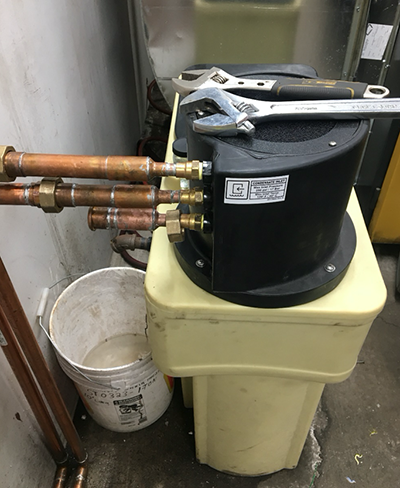If you have an oil-lubricated air compressor, you should consider the environmental considerations of your condensate disposal.
All lubricated compressors have oil carryover, and when the compressed air produced by the compression element is cooled in the aftercooler, some condensate forms. And floating on top of this water is a film of compressor lubricant.

Past practice was to simply run the water and oil into the floor drain, but this pollutes the sewer system — especially if it flows untreated into a waterway via a storm drain. A better and more reasonable practice is to install an oil separator that captures the lubricant for later correct disposal.
Locations where condensate is collected include at compressor aftercoolers, at coalescing filters, refrigerated air dryer drains and water separators. You need to ensure the drains of all these devices are directed to a location where the lubricant can be collected.
Be aware that if you do install an oil separator, it needs to be emptied on a regular basis — it is not a passive device. And make sure that it is installed as per manufacturer’s specifications and is sized for the correct flow capacity.
In hot environments, air compressors can produce lots of condensed water. For example, ambient air at 75% relative humidity and 80° F temperature contains about 0.15 gal of water per 1,000 cubic feet. Compressing this air to 100 psi and cooling it to 80° releases about 0.13 gal of water per 1,000 cf. A 100-hp compressor producing 450 cubic feet per minute, producing 648,000 cf per 24 hours, running would produce 84 gal of condensate a day that needs correct disposal.

For goodness sake.
Also in hi ambient there is a higher oil carry over (oil vapour). In some cases greater than 100ppm, sometimes higher than 500ppm, especially from cheap compressors with undersized coolers.
Compressed air condensation is industrial waste! It is not allowed in products humans consume!